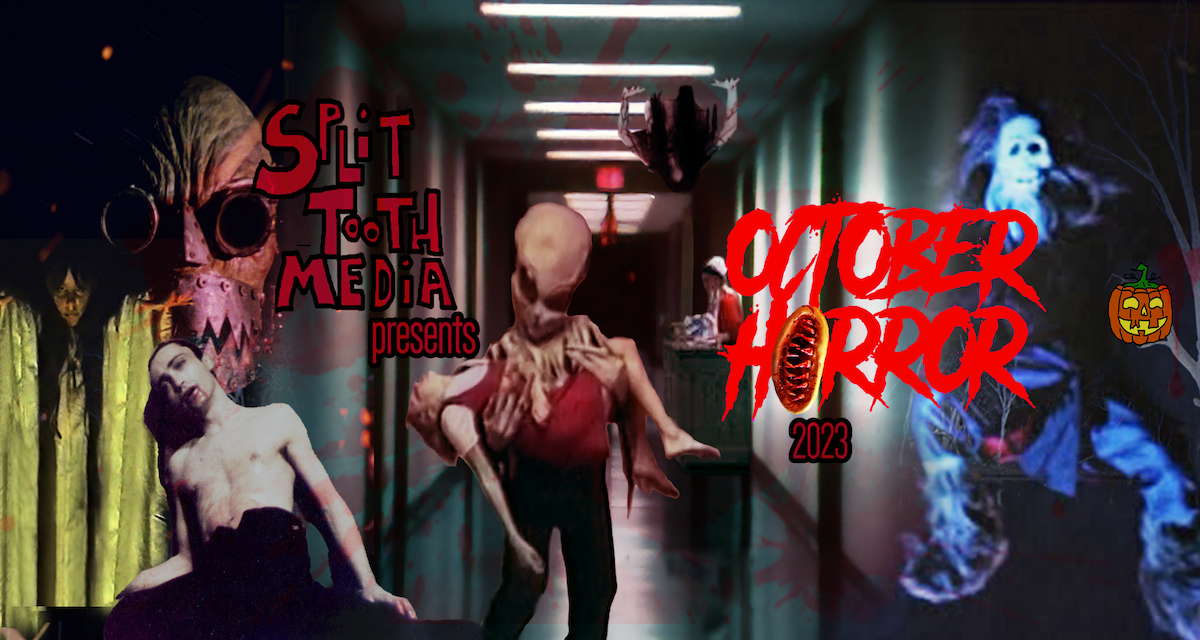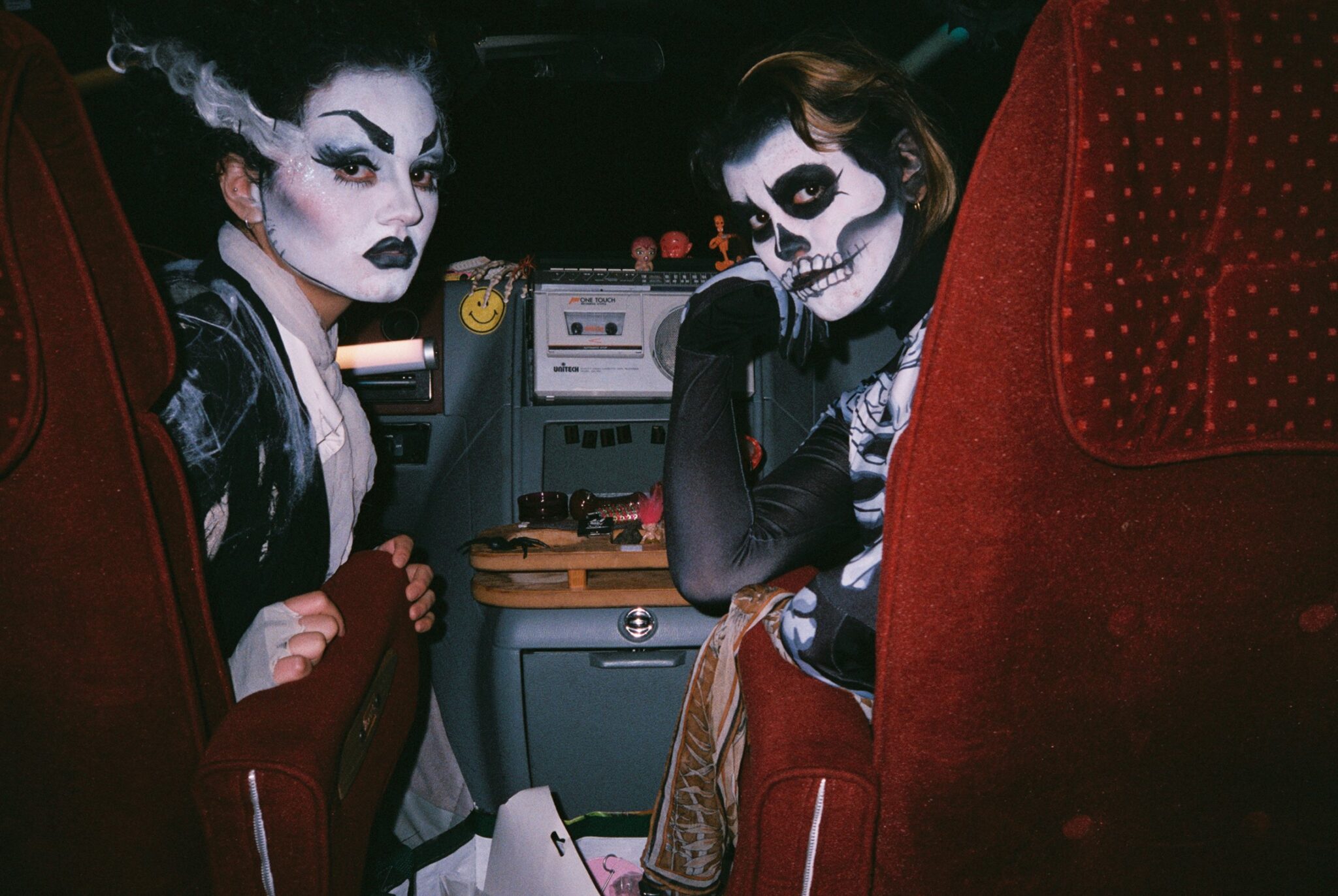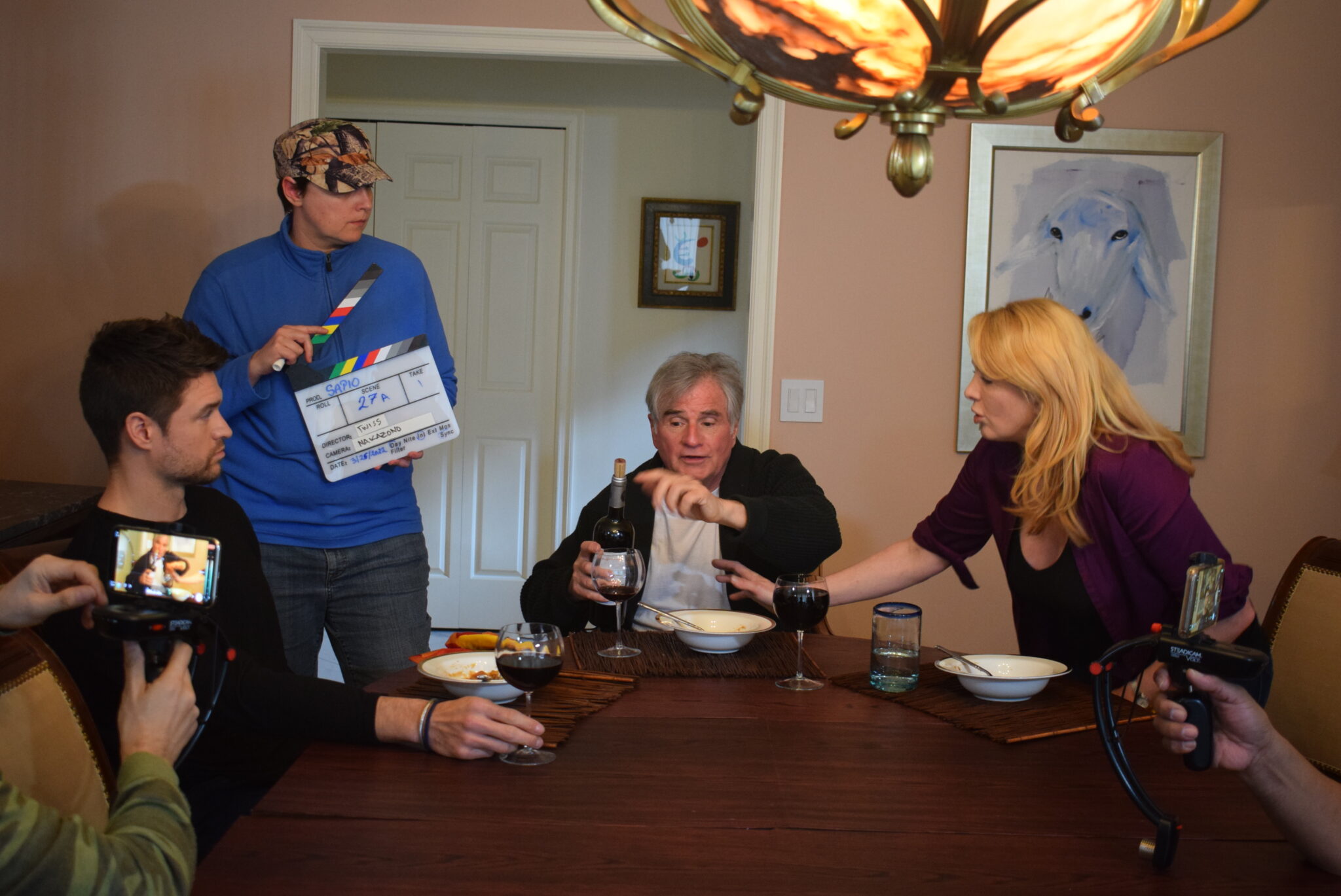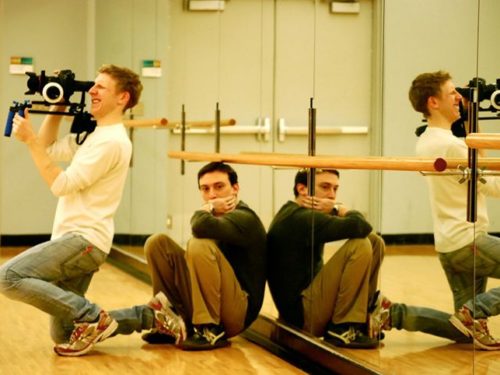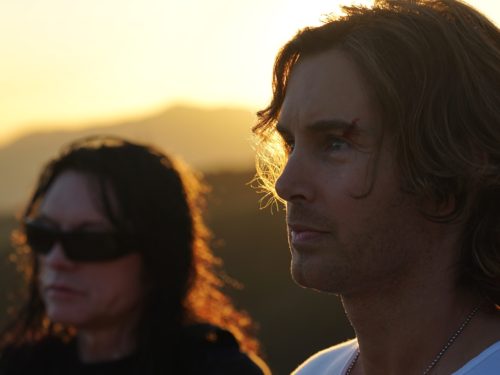The latest short film from Zach Fleming confronts a group of teenagers with the ghost of a local urban legend on Halloween night
What is horror? Is it hanging out with people you don’t fully trust, a little too far outside of town? Is it when everyone else’s costume is cool, and maybe a little sexy, but you’re dressed as Goofy? Is it when you get bullied into doing something you know is a bad idea? Or is it when you come face-to-face with a local legend’s ghost?
There’s a bit of pith to the question, because when entering into a contract with media labeled as “horror,” there’s an expectation of physical harm. But for most of us, at least those of us likely to be reading this, those first few suggestions are significantly more possible, and equally haunting because of it.
Zach Fleming has a habit of making shorts that bob and weave between the capital-H Horror elements of the genre, and the smaller, more intimate horror of daily life, personal interaction, and isolation. His latest, Mickey Dogface, hits the above mentioned beats, among others, in a way that’s relatable, fun, and (of course) horrific.
Watch the short below, then read our interview with Zach about this short, his thoughts on filmmaking, and how it all fits together.
Watch Mickey Dogface on Vimeo:
Split Tooth Media: Where did the idea for Mickey Dogface come from?
Zach Fleming: I’ve always loved urban legends and campfire stories, and I love bite-sized short films, so this was my attempt to graft those things together. I knew the setting would be Halloween night and that I wanted it to involve a few friends bullying another of their friends into a “challenge” of some kind, so it grew organically from there.
Your movies often flirt with horror. Staycation uses horror elements to tell a romantic comedy, or tragedy. Several of your other films are not exactly horror movies, but poke at similar human emotion. Do you feel like trauma is a driving element for you?
I don’t know about trauma, but I’m definitely interested in dread and the feeling of dread, and like, paralyzing anxiety. My films have kind of been on a trajectory of ‘trying to have more fun’ with each one. They’ve become a little less bleak. Mickey Dogface, especially, I wrote during the pandemic, when I was locked down and really bummed, like everyone was, obviously. I just wanted to make something comforting and silly with my friends. I find a lot of comfort and solace in horror. It’s a very cozy genre for me and I think that’s what gave Mickey Dogface that Are You Afraid of the Dark? or Goosebumps energy. It’s not like the feel-bad older stuff, which I still love. I really do love feel-bad movies, but I was feeling bad enough, so I wanted to make something just a little more fun.
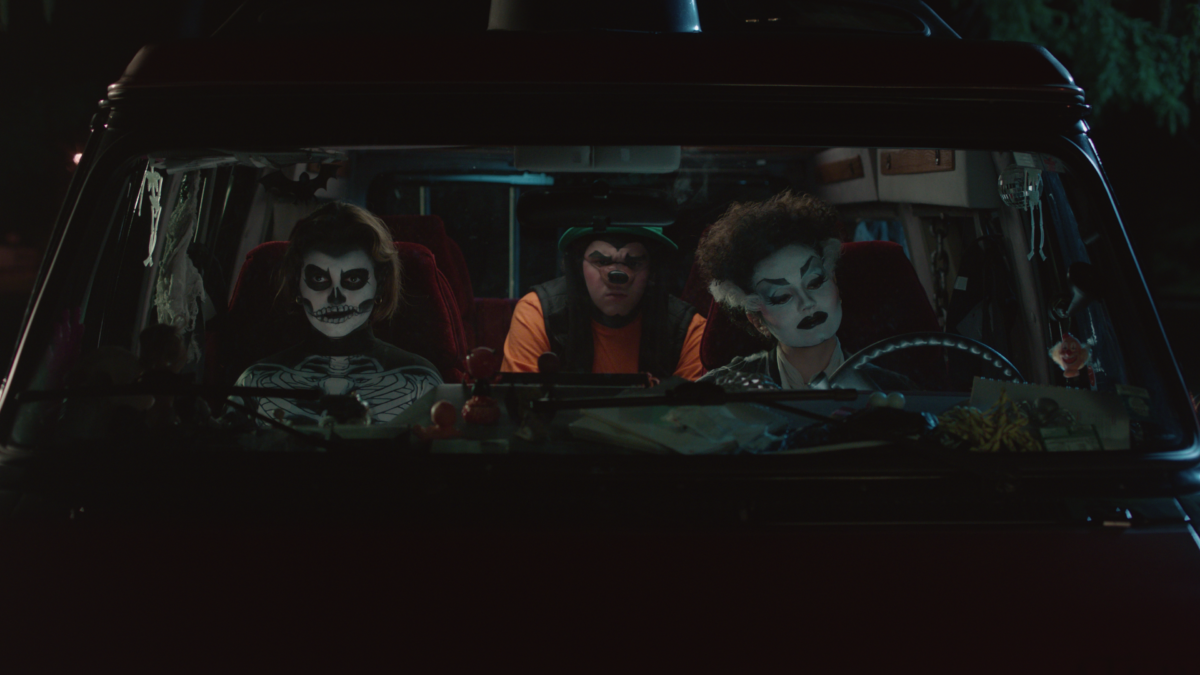
A smart thing about your movies, from a production angle, is they are all made with one to four people in a remote space. Is that a thing you are going to continue?
Both of the ideas I’m currently working on use very isolated locations; a family in a house or someone working at a remote site.
That also seems to be a big part of your anxiety. (Laughs)
Yeah, I don’t know why but that type of situation just lends itself to my brain… I want to stay there and be in that world. I’m always amazed by those big features with large ensembles that weave from A to Z because that’s just not how my plotting brain works. And for most of my shorts, I’ve written for locations that I knew I could get access to. Like the burned-out house in Mickey Dogface was an actual collapsed shed that I found while hiking behind my friend’s place. I went in with Sophie Porter-Hyatt, the production designer, to make it safe. We dug out the floor, layed out tarp, and smoothed it out and made sure there was no glass or nails that could hurt people.

And then you built a miniature of the shed, too. That’s so beautiful.
That’s something I give all credit for to Sophie, who is so talented and fantastic. During prep, I made a crack about how it would be fun to build a miniature of the house, but didn’t think we would be able to afford it. She was like, ‘Can I build a miniature?’ And I said, ‘Yeah! Absolutely! Take as much time as you want!’ (Laughs) And it took a long time; it took her months. She was like, ‘I have never put so much work into something that I knew was going to be destroyed.’ (Laughs) But it was very fun. We shot the main short in September of 2021 and the miniature burn in March of 2022.
That must have been so fun.
It was. There was a brief conversation about the scale of flames to the miniature and all that, but I just didn’t care. It’s part of the shtick that the flames are double the size of the shed. I got a kind of backhanded compliment from another filmmaker at a fest, saying it was funny that the flames were double the size of the shed, in a tone like I didn’t know…
It is funny.
Yep, it’s silly, yeah. (Laughs) We burned it in my friend’s driveway. Put it on a piece of plywood and a couple sawhorses. Just torched it.
That’s a real dream of mine: setting fire to a tiny house.
It was great and I had talked to a few friends who had burned miniatures before and got their advice on things to watch out for and ways to put the fire out if we need to do another take. You can’t just pour water on it or it’s fucked. It’s partially fucked anyway because you’ve already partially burned it. But sand is the way to go, so we had a bucket of sand on standby to douse it if we needed it. But we ended up just rolling with it and letting it burn.

It’s lovely in the film. I might’ve clapped the first time I saw it. Your aesthetic considerations are generally nice across all of your films, but Mickey Dogface, in particular, is the most poppy. The choices of costume and the van and the execution of those choices shows an aesthetic joy going into its creation.
Absolutely. And the van was a random find on Turo.com. It was random luck. I was hoping for a van, and then that one appeared to me for like $200. Funny enough, it came with a giant TV that was just stuck just behind the rearview mirror. It would have fully blocked the center view. I was trying to skirt around telling them that we were going to be filming in it, so I was asking, ‘Can you take the TV out of it?’ They were telling me it’s not a safety concern. Finally I had to say, ‘We’re going to film a little bit…’ and they helped us take it out.
And they didn’t ask for an extra rate or anything?
No, thankfully. Just a nice guy who was excited that his van was going to be in a movie.
I love people who haven’t been abused by a movie yet. They’re like, ‘Oh yeah, you can film in my apartment!’ And they will never say that again, because there’s going to be a hole in their sheetrock and they’re going to be sad.
(Laughs) Yes!
And then you replaced the TV with a tape player! Where’d you get the song for the film?
The song comes from a musician named Nick Corbo, who performs under the name Spirit Was. Check out their album. It’s fantastic. Came out a year or two ago at this point. He used to be in a band called LVL UP. I can’t remember how [producer] Lizz Astor knew him, but there was another short I wrote about a security guard doing a night shift at a mall with a cult and monster thing happening. We didn’t end up making that because of location and monster issues. The lead character of that was in a metal band and I was looking for a metal song to be written. Liz hooked me up with Nick. He wrote a perfect metal song. Two minutes. Exactly what I needed. Kind of like that band Nails; in that space. Then that kinda went out the window. With Mickey Dogface, it had a whole different vibe, but I was already in touch with him, so I reached out and said, ‘Hey, I’m sorry the metal thing isn’t going to go anywhere. But here is another script, would you maybe want to write something for this?’ He said absolutely, and, maybe a week later, he sent in the song, maybe 90 percent done.

That’s wild.
It’s a perfect song. I asked him if he would play Mickey also, and he did and was great. Our FX person, Matt Weir, who works on The Last Drive-In with Joe Bob Briggs, built the mask and the latex for the Mickey bit. Once we had it on Nick, Nick couldn’t hear anything. He was essentially blind and deaf while in his Mickey costume. We have some great blooper reels of me trying to get him to step slowly out from behind the tree and he can’t hear me. Just waddle shuffling… (Laughs)
Mickey Dogface is pretty explicitly a horror movie. It feels to me like there are two worlds of horror: the ones that are really upsetting and then what I tend to call “Party Horror,” which are the ones I have fun watching. This feels more like the latter. What are you watching when you’re watching things?
It’s such a wide gamut. I program for Spectacle Theater in Brooklyn, which is a volunteer run micro-cinema that’s been around for like 12 years now. I curate Blood Brunch there, which is a ‘mystery meat’ screening every Sunday – title isn’t revealed ’til it hits the screen. I try to keep those more on the Party side of horror, as you say, more on the monster, campy, splatter side. I try to avoid anything too feel-bad or skuzzy because of the mystery nature of it — I don’t want anyone’s day to be ruined who shows up for a goofy horror movie. I tend to stick to ’80s, ’90s, and early 2000s for that. So much of Spectacle’s mission statement is about lost and forgotten films, so I watched a lot of bottom of the barrel, z-grade garbage horror. I obviously have a totally different evaluation system from “real” movies. It’s more about watching for how much heart is on screen.
One discovery I’ve loved recently is Red Spirit Lake (1993). It’s by Charles Pinion, who did Twisted Issues (1988), a very No Wave, scuzzy Florida film. It’s very actively repellent but it’s also art. It’s very, very good. Every single content warning applies — They don’t hurt any animals, but like, everything else is pretty much in it.
That’s pretty much my line!
Same! I’m afraid of watching ’70s horror movies now. I was watching some Paul Naschy movie recently and it’s like, one minute, you’re having a good time and then, all of a sudden, they’re setting a rat on fire!
And why? They will do the gnarliest fake gore, but then they’ll cut a snake in half and it’s just fully inappropriate.
I’m glad we’ve moved out of that phase of horror.
What do you reckon your next phase is? Something bigger?
I’m trying to do a feature next. But as I’m writing things, I keep thinking of shorter things that could be fun to knock out on a weekend. I just want to get in and make something else. I think a big hurdle for a feature, in my brain, is that I just don’t know how I’ll be able to afford it, ever. It feels like an untenable thing to fund anything, so I put up mental roadblocks for myself and start to write other shorts. I’m trying to push through that though and I’ve got two features that I’m poking at and they are definitely more in the slow-burn direction than splatter. So kind of threading everything from what I’ve done.

Watch Mickey Dogface and more on Zach Fleming’s Vimeo page
Visit Zach Fleming’s website
(Split Tooth may earn a commission from purchases made through affiliate links on our site.)
Find the complete October Horror 2023 series here:
